Three billion years ago, Earth was a very different place.
-
Noah Planavsky Selected as a 2016 Alfred P. Sloan Fellow in Ocean Sciences

Noah Planavsky (left) and Timothy Lyons are seen here examining a rock sample in the lab. Photo credit: UCR Strategic Communications.The Sloan Research Fellowships are extraordinarily competitive awards involving nominations for most of the very best early-career scientists from the United States and Canada.
Planavsky worked with Timothy Lyons, PI of the NAI University of California, Riverside (UCR) Team, and received his doctoral degree in earth sciences in 2012, after which he held a postdoctoral appointment at Caltech.
Noah is currently an assistant professor in the Department of Geology and Geophysics at Yale University and is leading the Yale sub-team of the NAI UCR-led Alternative Earths team.
In supporting Planavsky’s application, Lyons wrote: “He is, in no uncertain ...
March 07, 2016 • Written by: Julie Fletcher • Report issue
-
Life’s Building Blocks Form In Replicated Deep Sea Vents
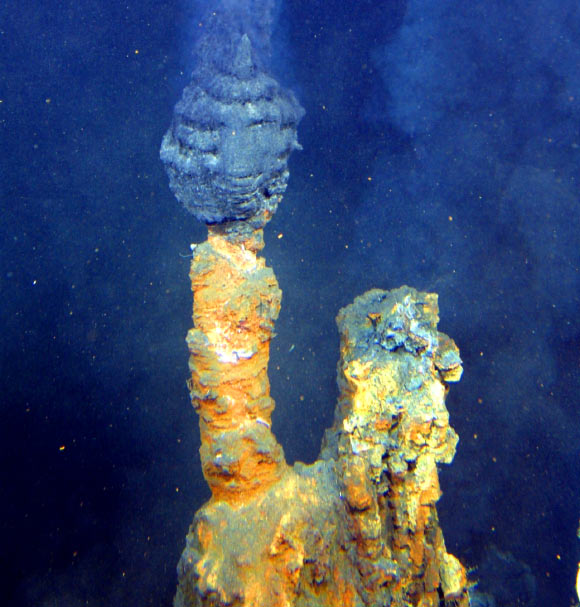
Alkaline hydrothermal vents may have played a role in the origin of life.Chimney-like mineral structures on the seafloor could have helped create the RNA molecules that gave rise to life on Earth and hold promise to the emergence of life on distant planets.
Scientists think Earth was born roughly 4.54 billion years ago. Life on Earth may be nearly that old with recent findings suggesting that life might have emerged only about 440 million years after the planet formed.
However, it remains a mystery how life might have first arisen. A major component of life now is DNA, a molecule that stores the genetic data that codes for proteins, including enzymes ...
Source: [astrobio.net]
March 06, 2016 • Written by: Charles Q. Choi • Report issue
-
Origins Project Announces Postdoctoral Lectureship Award

Aomawa Shields, a National Science Foundation Astronomy and Astrophysics Postdoctoral Fellow and a UC President’s Postdoctoral Program Fellow in the UCLA Department of Physics and Astronomy and the Harvard-Smithsonian Center for Astrophysics.Dr. Aomawa Shields has been named as the recipient of the 2016 Origins Project Postdoctoral Lectureship Award at Arizona State University (ASU), the largest award of its kind in the world. Shields will undertake a week-long residency at ASU, presenting a series of colloquia and a large public lecture.
Aomawa Shields as a participant in Season 1 of the FameLab USA competition in 2012. She was the winner of the competition’s Regional Heat 2 in Denver. From there, Shields presented at the National FameLab finals held at the 2012 Astrobiology Science Conference in Atlanta, where she received the Audience Choice ...
Source: [Arizona State University]
March 02, 2016 • Written by: Aaron Gronstal • Report issue
-
Life or Illusion? Avoiding ‘False Positives’ in the Search for Living Worlds
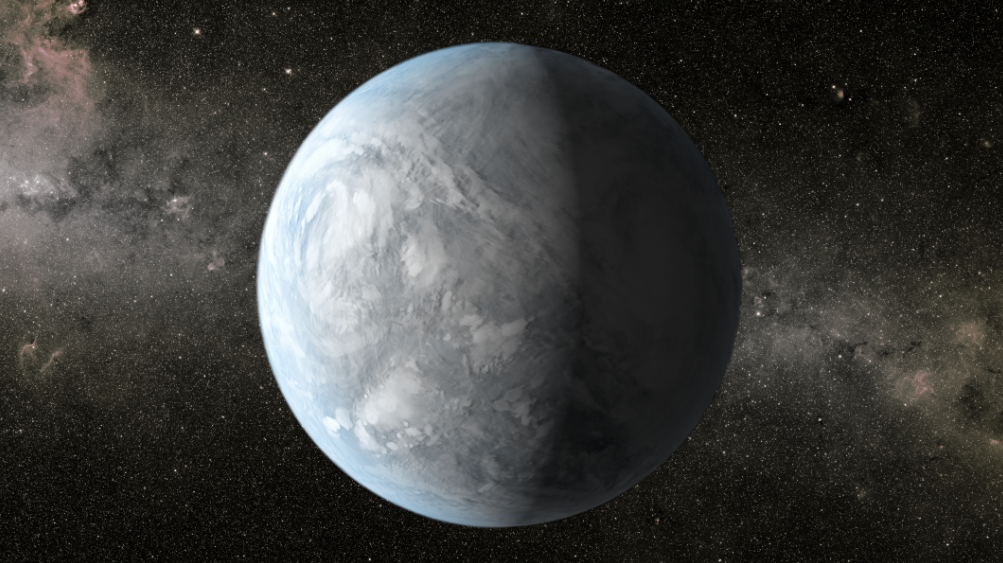
New research will help astronomers better identify and rule out “false positives” in the ongoing search for life. This image is an illustration of the planet Kepler 62E, about 1,200 light-years away in the constellation Lyra. Image credit: NASAIs it life, or merely the illusion of life?
Research from the NASA-funded, University of Washington-based Virtual Planetary Laboratory published Feb. 26 in Astrophysical Journal Letters will help astronomers better identify — and thus rule out — ‘false positives’ in the search for life beyond Earth.
Powerful devices such as the James Webb Space Telescope, set for launch in 2018, may help astronomers look for life on a handful of faraway worlds by searching for, among other things, evidence of oxygen — a ‘biosignature’ — in their atmospheres. This is done by transit spectroscopy, or studying the spectral features of light visible through ...
March 01, 2016 • Written by: Peter Kelley • Report issue
-
Many Worlds blog post on the recent Upstairs Downstairs Workshop at ASU

This is an artist’s view of the young Earth under bombardment by asteroids, one of many periods with conditions likely to have parallels in other solar systems. NASA GSFCThe NExSS co-sponsored blog Many Worlds has a good post, The Search for Exoplanet Life Goes Broad and Deep, on the recent Upstairs Downstairs: Consequences of Internal Planet Evolution for the Habitability and Detectability of Life on Extrasolar Planets workshop, held at Arizona State University.
The workshop was sponsored by NASA’s Nexus for Exoplanet Systems Science (NExSS), the NASA Astrobiology Institute (NAI), and the National Science Foundation.
February 25, 2016 • Written by: Julie Fletcher • Report issue
-
Societal Implications of Astrobiology at the Center of Theological Inquiry

The Center of Theological Inquiry (CTI) held their Winter Symposium earlier this month (February 1-3) as part of a two-year inquiry into the societal implications of astrobiology, made possible by funding from the NASA Astrobiology Program and the John Templeton Foundation.
Frank Rosenzweig, PI of the NAI University of Montana Team, was one of two visiting astrobiologists collaborating with CTI’s research fellows. Both scholars are interested in learning about the origins of life by replicating evolutionary processes in the laboratory. Rosenzweig has undertaken research that seeks to study the process of evolution in such a way that history and ...
February 24, 2016 • Written by: Julie Fletcher • Report issue
-
Earth in 60 Seconds

What would four and a half billion years look like compressed into a single minute? The NASA Astrobiology Institute team at MIT has created an educational app for the iPad that lets players test their knowledge of Earth’s history within 60 second rounds. When did the first traces of oxygen appear? When did dinosaurs go extinct? Players can compete with others for the best score and, after viewing their results, tap on links to learn more about each milestone in the evolution of terrestrial life.
Earth in 60 Seconds can be downloaded for free through iTunes. https://itunes.apple.com ...
Source: [iTunes]
February 19, 2016 • Written by: Miki Huynh • Report issue
-
Volcanoes Light Up Atmospheres of Small Exoplanets
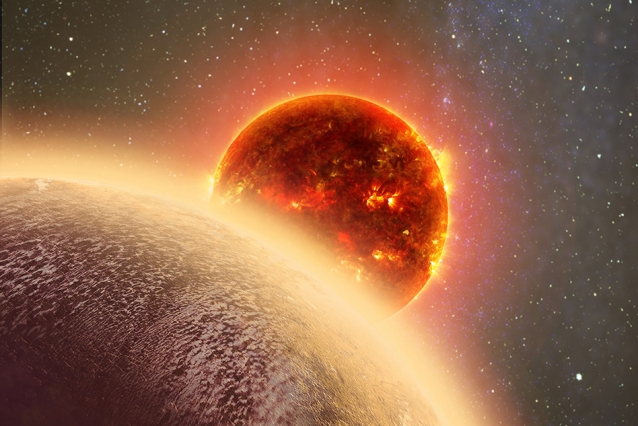
Newly discovered planet GJ 1132b, a super-Venus very close to its parent star, could be a candidate to look for volcanic eruptions. Credit: Dana BerryGeologic activity on a planet is believed to be very important for life, but it can be hard to spot its signs from far away — especially on smaller, rocky planets akin to Earth.
What if there was a large volcanic eruption on such an Earth-like planet — could we spot that? A group of graduate students at the University of Washington’s astrobiology program considered this question after it arose during a class discussion about the search for life outside our solar system.
“All life needs energy,” said doctoral student Joshua Krissansen-Totton. “At first we thought about plate tectonics. It’s ...
Source: [Astrobiology Magazine]
February 16, 2016 • Written by: Elizabeth Howell • Report issue
-
Upstairs Downstairs: Consequences of Internal Planet Evolution for the Habitability and Detectability of Life on Extrasolar Planets
Where: Arizona State University & Virtual Locations
Date: February 17th – 19th, 2016
Time: 9:00AM – 3:00PM MST
Agenda: http://nai.nasa.gov/calendar/www-upstairs-downstairs/#agendaThe chemistry and physics of planetary interiors shapes conditions at their surfaces in ways that profoundly affect habitability and our ability to detect life. The nature and extent of these interactions are not well understood even on Earth. For example, we debate the ways in which internal processes affected the emergence of an O2-rich surface environment on Earth, paving the way for complex life. As a result, we lack a ...
Source: [NASA Astrobiology Institute (NAI)]
February 11, 2016 • Written by: • Report issue
-
Atlantic Ocean Expedition Finds Signs of Life in Earth's Mantle

Dr. Beth Orcutt (Bigelow Laboratory for Ocean Sciences, USA) co-led an Atlantic Ocean expedition searching for mantle rocks that might provide clues about how life developed on early Earth and other planets. Image Sources: Bigelow Laboratory for Ocean Sciences/European Consortium for Ocean Research Drilling.An international team of scientists – recently returned from a 47-day research expedition to the middle of the Atlantic Ocean – have collected an unprecedented sequence of rock samples from the shallow mantle of the ocean crust that bear signs of life, unique carbon cycling, and ocean crust movement. Led by Co-Chief Scientists Dr. Gretchen Früh-Green (ETH Zurich, Switzerland) and Dr. Beth Orcutt (Bigelow Laboratory for Ocean Sciences, USA), the team collected these unique rock samples using seabed rock drills from Germany and the UK – the first time in the history of the decades-long scientific ocean drilling program that such technology has ...
Source: [Bigelow Laboratory for Ocean Sciences]
February 10, 2016 • Written by: Bigelow Laboratory for Ocean Sciences • Report issue
-
How Friendly Is Enceladus’ Ocean To Life?

Plumes erupting off the surface of Enceladus, an icy moon.How acidic is the ocean on Saturn’s icy moon Enceladus? It’s a fundamental question to understanding if this geyser-spouting moon could support life.
Enceladus is part of a family of icy worlds, including Europa (at Jupiter) and Titan (also at Saturn), populating our outer solar system. These bodies are some of the most promising places for life because they receive tidal energy from the gas giants they orbit and some contain liquid water.
The Cassini spacecraft has been taking regular measurements of Enceladus for more than a decade to evaluate its environment. One of the key factors influencing ...
Source: [Astrobiology Magazine]
February 08, 2016 • Written by: Elizabeth Howell • Report issue
-
In Memory of Mike Jura
Video courtesy of the UCLA Institute for Planets and ExoplanetsMichael Jura, esteemed professor in the Physics and Astronomy Department at the University of California, Los Angeles, passed away in January 2016. He is remembered for his numerous and varied contributions to astrophysics. Jura was a member of the emeritus NAI Team at UCLA.
In his most recent work, Jura and his team looked at the atmospheres of white dwarf stars to study accretions from extrasolar minor planets, combining observations obtained at several different wavelengths with theoretical models. The research allowed the team to characterize the chemical composition and tectonic ...
Source: [UCLA Physics and Astronomy]
February 08, 2016 • Written by: Miki Huynh • Report issue
-
From Chemical Gardens to Life and Art
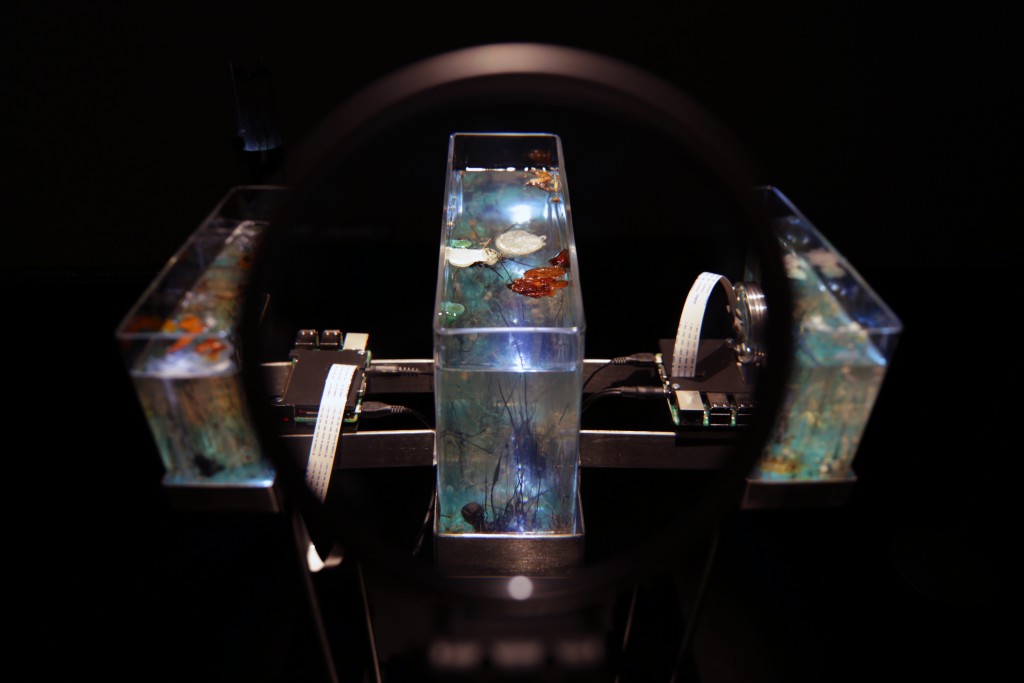
Image Source: robertina.netChemical garden systems, generated by the chimney-shaped structures of ocean hydrothermal vents, have been of astrobiological interest to scientists in the NAI team at the Jet Propulsion Laboratory for some time. The possible link between these vents to the creation of energy and the beginnings of life on early Earth, first presented by Mike Russell in 1989, was recently reflected upon in an essay by Tim Requarth, published in Aeon.
In December 2015, the potential of these vents also became the subject of an art installation at the Aksioma Project Space in Ljubljana, Slovenia. Based on a lecture discussing research ...
Source: [NASA Astrobiology Institute (NAI)]
February 05, 2016 • Written by: Miki Huynh • Report issue
-
Baruch S. Blumberg Honored for His Lifetime Work in Science and Medicine
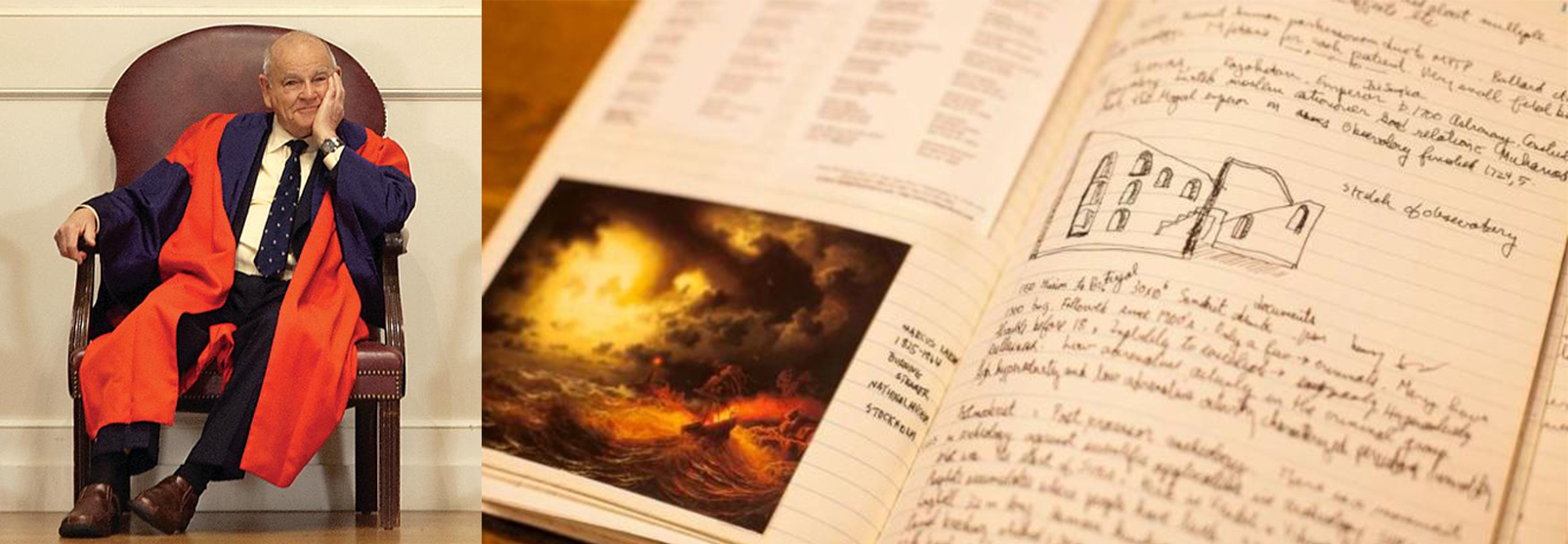
Presenters, in the program hosted by the American Philosophical Society, honored Barry Blumberg's scientific research approach and the handwritten journals detailing his discovery of the Australian antigen, a biomarker for hepatitis B. Image source: APS.Source: American Philosophical Society
On December 10, 2015, the family of the late Baruch (Barry) S. Blumberg officially bequeathed his handwritten journals to the American Philosophical Society. Dr. Blumberg, a former President of the Society and discoverer of the Australia antigen, a biomarker for hepatitis B, received the 1976 Nobel Prize in Physiology or Medicine for his work on the hepatitis B virus while an investigator at the National Institutes of Health.
The journals cover a 67-year time frame and offer a unique window into both the discovery of the Australia antigen and Dr. Blumberg’s continuing research until his death ...
Source: [American Philosophical Society]
January 29, 2016 • Written by: • Report issue
-
Upcoming Astrobiology Application Deadlines
Calling all scientists! Don’t miss these opportunities to kick-start your career or fund research both in the lab and out in the field. The deadlines are approaching soon.
The Lewis and Clark Fund for Exploration and Field Research in AstrobiologyDeadline: February 16, 2016
The American Philosophical Society (APS) and the NASA Astrobiology Institute partnered in 2006 to promote the continued exploration of the world around us through a program of research grants in support of astrobiological field studies undertaken by graduate students, postdocs, and early-career scientists and scholars who are affiliated with U.S. institutions. Previous award recipients ...
January 22, 2016 • Written by: Miki Huynh • Report issue



